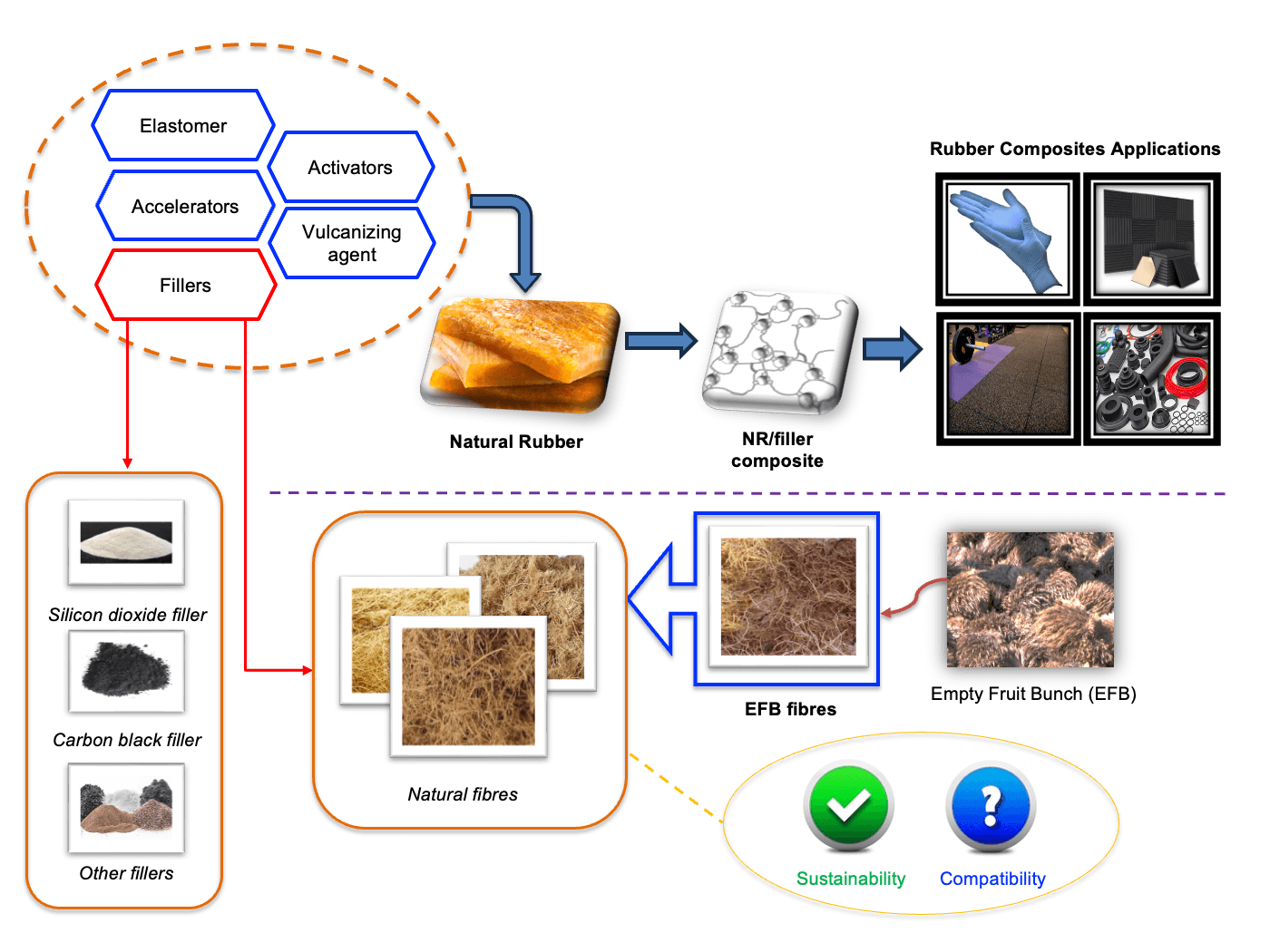 Open Access
Open Access
REVIEW
A Comprehensive Review of Natural Rubber Composites: Properties, Compounding Aspects, and Renewable Practices with Natural Fibre Reinforcement
1 Department of Chemical Engineering and Sustainability, Kulliyyah of Engineering, International Islamic University Malaysia, Kuala Lumpur, 50728, Malaysia
2 Faculty of Chemical Engineering, Universiti Teknologi MARA (UiTM), Shah Alam, 40450, Malaysia
3 Department of Construction Management, Faculty of Built Environment, Tunku Abdul Rahman University of Management and Technology, Kuala Lumpur, 53300, Malaysia
4 Department of Bioprocess and Polymer Engineering, Faculty of Chemical and Energy Engineering, Universiti Teknologi Malaysia, Johor Bahru, 81310, Malaysia
5 Department of Chemical Engineering, Sunchon National University, Suncheon, 57922, Republic of Korea
* Corresponding Author: Fathilah Ali. Email:
(This article belongs to the Special Issue: Recent Advances on Renewable Materials)
Journal of Renewable Materials 2025, 13(3), 497-538. https://doi.org/10.32604/jrm.2024.057248
Received 12 August 2024; Accepted 08 November 2024; Issue published 20 March 2025
Abstract
This review provides a comprehensive overview of natural rubber (NR) composites, focusing on their properties, compounding aspects, and renewable practices involving natural fibre reinforcement. The properties of NR are influenced by the compounding process, which incorporates ingredients such as elastomers, vulcanizing agents, accelerators, activators, and fillers like carbon black and silica. While effective in enhancing properties, these fillers lack biodegradability, prompting the exploration of sustainable alternatives. The potential of natural fibres as renewable reinforcements in NR composites is thoroughly covered in this review, highlighting both their advantages, such as improved sustainability, and the challenges they present, such as compatibility with the rubber matrix. Surface treatment methods, including alkali and silane treatments, are also discussed as solutions to improve fibre-matrix adhesion and mitigate these challenges. Additionally, the review highlights the potential of oil palm empty fruit bunch (EFB) fibres as a natural fibre reinforcement. The abundance of EFB fibres and their alignment with sustainable practices make them promising substitutes for conventional fillers, contributing to valuable knowledge and supporting the broader move towards renewable reinforcement to improve sustainability without compromising the key properties of rubber composites.Graphic Abstract

Keywords
Cite This Article
 Copyright © 2025 The Author(s). Published by Tech Science Press.
Copyright © 2025 The Author(s). Published by Tech Science Press.This work is licensed under a Creative Commons Attribution 4.0 International License , which permits unrestricted use, distribution, and reproduction in any medium, provided the original work is properly cited.


 Submit a Paper
Submit a Paper Propose a Special lssue
Propose a Special lssue View Full Text
View Full Text Download PDF
Download PDF Downloads
Downloads
 Citation Tools
Citation Tools
